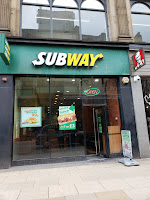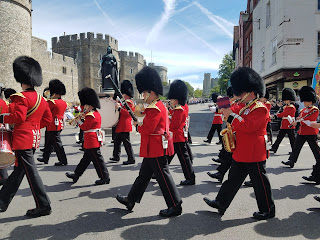Our stop at Yesnaby Cliffs was not as long as I wanted it to be, so I wasn't able to take a good long hike. Archie dropped me off near the dramatic cliffs you see in the photos, and I walked around a little, but if you have the time, and if I ever have the chance again, I would definitely hike around. It was really windy up there, and I was mesmerized by the crashing waves. In the far distance (not in these photos), I could see Hoy, another island in the archipelago (check my usage of the word here). The cliffs are beautiful, but they can also be dangerous if you're not careful and lose your footing, so be mindful when taking selfies.


Our next stop was Unstan Chambered Cairn (a burial mound). There are several of these types of cairns around the mainland, some are more accessible than others. This was accessible, but it did require a few more maneuvers that I had not planned on, like crawling in on my hands and knees. I almost didn't go in, but after a few minutes of negotiating with myself, I sucked it up, apologized to my knees and went in. Those few minutes were very claustrophobic. I don't know if you can really get the idea of the very low height of the entrance way from the photo below. But it was pretty mind blowing to think I was inside an ancient burial mound. It does open up once you're through the entrance. Not everyone gets this opportunity, so I am glad I did, and very glad I took advantage of it.

Archie was full of unexpected experiences, from an Orkney traffic jam (consisting of four cars, and this was Archie's description, with a wink) to feeding Hungarian (
Mangalitsa or Mangalica) pigs apples. The pigs are named Brian and Paul (on the sign in front of the pen). Archie honked, and the pigs came running. Clearly, this was not their first rodeo. I could not stop laughing.
On a somewhat more somber note, we visited the memorial to the
HMS Royal Oak, a ship that was sunk by a German U-boat in 1939; 839 men and boys were killed, out of a crew of 1,234. The ship is still in the shallow water of the Scapa Flow. Archie went with me into the little hut and gave me the history of the HMS Royal Oak.
The last place we visited on this incredible day was the beautiful
Italian Chapel on Lamb Holm, built by the Italian prisoners of war, designed primarily by Domenico Chiocchetti. It's two Nissan huts put together with a simple, but lovely front piece, almost like gingerbread. Archie walked me through the chapel, telling me stories about the handcrafted candle holders and the little heart embedded into the floor. I have to be honest, the chapel wasn't on my original list of places to visit, it was kind of far from where I thought I was going to be (had I not met up with Archie) and I didn't think I would miss that much, but I think I would have, and I'm really glad that Archie took me there. It was certainly worth the visit, and I recommend you include it in any Orkney itinerary.





We also drove over and stopped to look at the Churchill Barriers which were built after the sinking of the HMS Royal Oak on orders from Winston Churchill. The Barriers were built mostly by Italian prisoners of war. I have heard of the Barriers before but didn't have a visual in my mind, so it was nice to see them and get a better understanding of what they are.
Well, there you go. I hope these two posts have given you some idea of what I saw and experienced in Orkney. There will be another post of my day on Papa Westray, Papay, including the shortest regularly scheduled commercial flight at just under 2 minutes.














Comments
Post a Comment